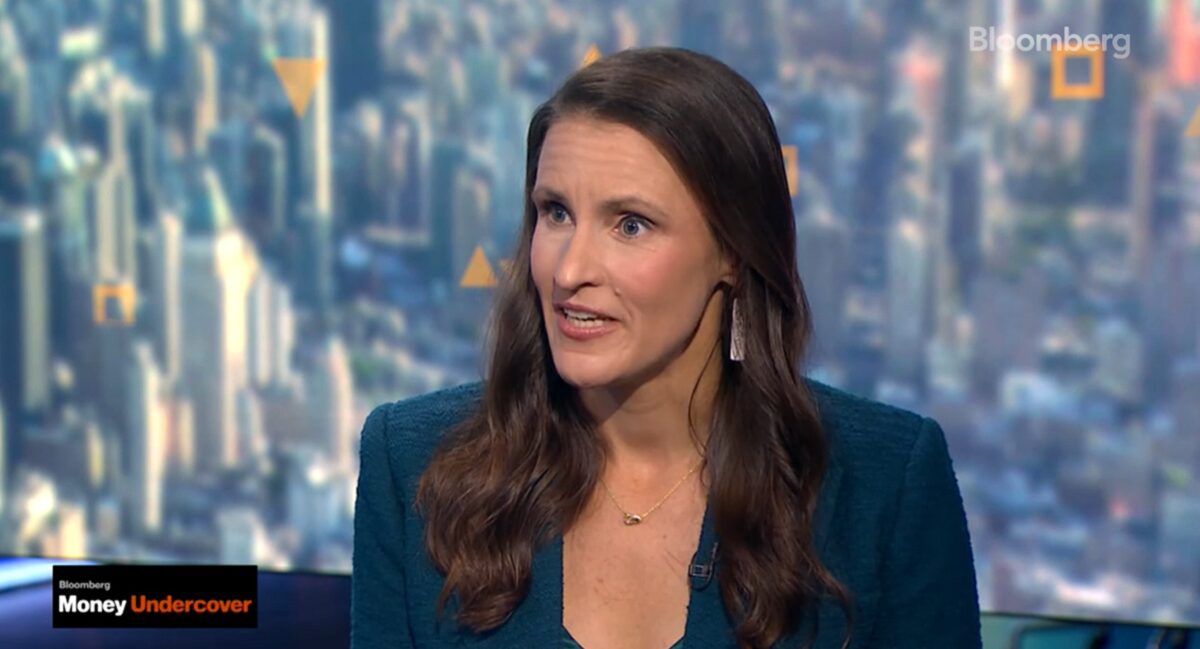Responsible Investor: Are European Fund Houses Coming for US Managers' ESG Lunch?
NEPC’s Endowment and Foundation Team Leader, Krissy Pelletier, was quoted in Responsible Investor to speak on how asset owners are thinking about sustainability considerations and its role in their manager selection. View the article on Responsible Investor’s site here.
US asset owners look further afield as local managers lose appetite for sustainability.
. . .
Krissy Pelletier, partner and head of endowment and foundation team at consultancy NEPC, says US asset owners are getting “more and more savvy and looking much further and much deeper”.
“Even investors who come to the table with strictly the investment-opportunity lens have gotten more savvy on digging deeper when there is a sustainability-minded find, asking questions about the expertise of the team or additional resources that a firm is utilising,” she adds.
. . .
According to Pelletier, there may have to be “hard choices” if underperformance of sustainable or ESG strategies impacts the spend rate of one of her clients or the work it is aiming to carry out.
However, she notes that many asset owners are being patient as some ESG strategies underperform and are willing to try and understand the underlying causes.
Click here to continue reading the full Responsible Investor article.
Capital Allocators: Asset Management Consolidation
NEPC’s Tim McCusker was featured on the Capital Allocators Podcast to discuss NEPC’s recent merger with Hightower Holdings and provide an inside look at dealmaking in asset management. Listen to the podcast on Capital Allocators here.
Bloomberg: Manufacturers Caught Between Trump Tariff Bluster and Reality
NEPC’s Head of Asset Allocation, Phillip Nelson, speaks on the the future of American tariffs as a new administration rolls in. View the article on Bloomberg’s site here.
It’s possible that Donald Trump’s latest tariff threats on Mexico and Canada are just negotiating bluster. It’s also possible that he’s serious. Either way, US manufacturers are going to get caught in the middle.
. . .
“The president has latitude to carve out exemptions by individual product code to more specifically target Chinese manufacturers that have invested in Mexico or other areas of national priority without crippling the US supply chain,” said Phillip Nelson, head of asset allocation at NEPC, an investment consultant that oversees $1.7 trillion of assets.
Bloomberg Radio: With Guest Sarah Samuels
NEPC’s Sarah Samuels was featured on the Bloomberg Intelligence Podcast for her outlook on private markets in 2025. Listen to the podcast on Bloomberg here.
Pensions & Investments: New Crop of Embedded Annuity Target-Date Funds Seen as a Way Station — Not a Final Stop, Experts Say
NEPC’s Bill Ryan was recently quoted in an article by Pensions & Investments which is focused on increasing returns to 401(k)s through embedded annuity options. View excerpts below or read the full article on the Pensions & Investments site here.
Target-date funds coming to market this year with embedded annuity options could mark a key step forward in the industry’s long slog to help 401(k) participants stretch their retirement savings into needed income for life.
. . .
Bill Ryan, a partner and head of defined contribution solutions with Boston-based investment consultant NEPC, said he remains skeptical, predicting that no more than 10% of participants will likely be in the market to buy an annuity.
“There’s a higher probability, if they engage at retirement, they take all the money out, move it to their own personal wealth adviser, who then may facilitate something similar,” Ryan said. In the defined contribution construct, “we’re missing the human wealth manager that actually helps the individual trigger the annuity. There’s nobody holding the hand of the participants to successfully facilitate that transaction … and that human behavior is where I think this breaks down.”
Instead, Ryan predicted, passive target-date funds with elevated equity exposures could prove to be the “killer app” in the retirement space, allowing participants to build up bigger 401(k) retirement pools over a working life of 40 years or more which they can then rely on for a “paycheck” in retirement, without the need of a guaranteed income crutch.
Participants who have undersaved, meanwhile, could be worsening their situations by paying an insurer a premium to get a guaranteed income stream. “They actually could put themselves in a bigger deficit,” he said.
Click here to read the full article on the Pensions & Investments site.
Bloomberg: CEOs Brace for the Chaos of Another Four Years of Trump
NEPC’s Head of Asset Allocation, Phillip Nelson, speaks on the potential implications of tariffs on China in a new Trump era. View the article on Bloomberg’s site here.
Large corporations crave predictability, and the primary economic policy of Donald Trump is chaos. Whether it’s the threat of steep new tariffs or retribution, chief executive officers and their carefully drawn plans will once again be at the whims of a leader who’s emboldened to reorder the economy.
. . .
There’s good reason to believe that many of Trump’s comments are bluster and that he’s more likely to target Chinese companies than American ones importing components from abroad. “He won’t want to be held responsible for the closure of a Midwestern factory when the operator can no longer afford to get the parts it needs, says Phillip Nelson, head of asset allocation at NEPC, an investment consultant that oversees $1.7 trillion of assets. Then again, Trump won’t have the prospect of reelection to think about this time.”
Pensions & Investments: Who Watches the Watchmen? Independent Evaluators Horning in On Consultants' Trusted Adviser Monopoly
NEPC’s Mike Manning & Steve Charlton have been featured in an article in Pensions & Investments for their insights on the OCIO industry and third-party evaluators. View excerpts below or read the full article on the Pensions & Investments site here.
For decades, investment consulting firms have maintained their perch as the prime gatekeepers of institutional portfolios, advising asset owners on manager selection, asset allocation and portfolio construction.
But with consultants, in their guise as outsourced CIOs, now almost universally bringing their own dogs to the money management fight, the question of who can gatekeep the gatekeepers is taking on growing relevance.
. . .
The hope, said Michael P. Manning, managing partner of Boston-based investment consultant and OCIO firm NEPC, “is that they’re going to put us in front of organizations where there’s a good cultural or philosophical fit, as opposed to organizations … who just send out 20 RFPs,” without a deep understanding of how a firm such as NEPC works and its relative strengths.
. . .
Steve Charlton, a partner and head of client solutions with NEPC, said with third-party evaluators now accounting for roughly a third of the OCIO searches NEPC responds to, the investment consultant — with $1.66 trillion in advisory assets as of June 30 and over $100 billion in OCIO mandates — is making “a concentrated effort” to engage with those firms, reflecting their rising profile as “the interface between the firm and the end client.”
Third-party evaluators ask a lot of challenging questions, Charlton noted, which in turn can result in a more robust process than searches that don’t involve those players. They are effectively helping clients do a better job fulfilling their fiduciary duty, he said.
Click here to read the full article on the Pensions & Investments site.
Pensions & Investments: Endowments with more U.S. stocks, hedge funds top returns for 2024 fiscal year
NEPC Partner and Practice Group Leader, Kristin Reynolds, has been featured in an article in Pensions & Investments for her commentary on exceptional endowment returns. View excerpts below or read the full article on the Pensions & Investments site here.
College and university endowments boasting higher allocations to domestic equities and hedge funds chalked up positive returns for the second fiscal year in a row, even stronger than the previous year.
. . .
Hedge funds may have made the difference for some endowments when comparing fiscal year 2024 to fiscal year 2023, said Kristin Reynolds, partner and practice group director at NEPC.
“There’s a whole group in the middle that I think are interesting, that have diversified strategies that are thinking about the world in a more conventional manner,” said Reynolds. “They had a high year for fiscal year 2024 if they had public equity, but also diversifiers helped in 2024. When I say diversifiers, I mean what other people might call hedge funds or output-oriented strategies. With the volatility in the markets and China having a rally, strategies that were more globally oriented but also less tied to public markets did well.”
Reynolds said those endowments may have struggled more in fiscal year 2023.
. . .
“Private equity has been the main driver of returns for the long-term period,” said NEPC’s Reynolds. “You can imagine that the questions are around (whether) private equity drive returns in the future, and so there are a lot of discussions about private equity valuations largely coupled with public equity valuations.”
Reynolds said that while in the last two years private equity returns have been lower, she still thinks there are strong returns ahead in the long term, especially in areas like middle-market buyout funds, the kinds of areas where operators are strongly involved.
Click here to read the full article on the Pensions & Investments site.
Bloomberg Markets: Money Undercover - NEPC Partner Sarah Samuels
NEPC Partner and Head of Investment Manager Research, Sarah Samuels, sat down with Lisa Abramowicz of Bloomberg Markets to share her expertise on key trends in institutional investing, as well as highlighting that CIO mindset which drives returns in today’s complex markets.
Pensions & Investments: Hightower Holding to Acquire Majority Stake in NEPC
NEPC has been featured in an article in Pensions & Investments regarding the majority stake acquisition by Hightower Holding. View excerpts below or read the full article on the Pensions & Investments site here.
Hightower Holding, a Chicago-based wealth management firm, has agreed to acquire a majority stake in Boston-based investment consulting firm NEPC.
Hightower and NEPC executives said the deal should close in early 2025. They declined to provide further details on the costs of the transaction, beyond noting that NEPC professionals would continue to retain significant stakes in NEPC, as well as Hightower.
. . .
Together, Hightower — a leading industry consolidator of 140 U.S. financial advisory practices since its founding in 2008 — and NEPC, with $1.66 trillion in assets under advisement or management, would boast $258 billion in assets under management.
. . .
Meanwhile, Michael Manning, managing partner of NEPC, will join the Hightower’s board of directors once the deal closes. Manning, in the same interview, said the deal would help accelerate the growth of an NEPC wealth management segment that, while only 3% of the firm’s OCIO business, had already become a “full fledged business line” from a revenue perspective over the past seven years or so.
The synergies of a Hightower-NEPC combination make the deal an exciting one for both firms, agreed Oros and Manning. This is truly a “one plus one equals five” situation, noted Oros.
Click here to read the full article on the Pensions & Investments site.









